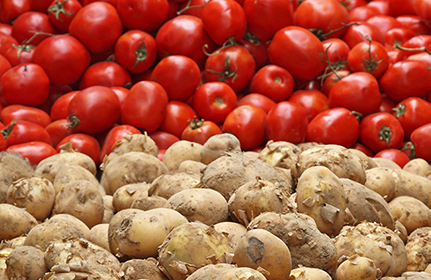Climate Adaptation and Mitigation Opportunities In Fruit and Vegetable Supply Chains
-

December 11, 2019
American Geophysical Union Fall Meeting 2019, Moscone Center
San Francisco, California, USA
Dietary recommendations vary around the world, but nearly all include a need for greater consumption of fruits and vegetables (F&V). However, global systems for supply and distribution of these essential and especially nutritious foods are already insufficient to meet recommendations, a situation that continues to worsen with intensifying climate change, as well as competing demands for water, labor, and the other key resources. The key attributes that drive consumer demand for F&V include price, taste, and convenience. Each of these factors introduces major complexities and trade-offs as attempts are made to boost F&V consumption while also pursuing climate adaptation and mitigations opportunities in these crops. For instance, taste typically implies distributed supply chains with minimal time from field to fork, but the smaller production facilities associated with such systems generally lose the cost- and input-efficiencies of large, concentrated operations. Adaptation imperatives will also inevitably drive F&V production out of current high-productivity areas (e.g. California) and into new regions with less certain profitability, more financial risk, and most likely higher food prices for consumers.
The Fruit and Vegetable Supply Chains: Climate Adaptation and Mitigation Opportunities project is now two years into a four-year effort to develop and apply a unique modeling approach to evaluating opportunities to improve the environmental and socioeconomic performance of F&V supply chains. We have integrated crop, economic, hydrologic, and life-cycle assessment models in a manner that makes it possible to evaluate the complexity of trade-offs associated with climate adaptation and mitigation opportunities in these systems. Our research on F&V supply chains comes at a time when they are undergoing tremendous change and innovation. Drivers globally include shifts in dietary preferences, general increases in economic development, urbanization, and concerns over sustainability–not just environmental factors (e.g,. biodiversity, climate change, water quality, etc.), but also the socioeconomic components of sustainability, such as the welfare of the communities where these supply chains have their origins. Our current research is focused on opportunities within the United States, but this methodology has broad application to F&V supply chains around the world.
Dr. Dave Gustafson delivered a presentation about the team’s methodology and progress as part of the session on Improving the Simulation of Climate Impacts on Agriculture at the 2019 Fall Meeting of the American Geophysical Union.
